What Is Scalp Psoriasis?

Scalp psoriasis, a chronic skin condition affecting millions globally, poses both physical discomfort and emotional stress. In this comprehensive discussion, we will delve into what it entails, exploring its causes, symptoms, and available treatment options. Understanding Scalp Psoriasis A specific type of psoriasis, involves the chronic autoimmune disorder characterized by the rapid buildup of skin cells. While a healthy individual experiences a natural skin cell growth cycle over a month, psoriasis accelerates this process. The result is the formation of thick, scaly, and itchy patches on the skin, specifically targeting the scalp. Causes The precise cause of psoriasis, including its manifestation on the scalp, remains elusive. However, it is widely acknowledged to be a complex interplay of genetic and environmental factors. Common triggers and risk factors associated with scalp psoriasis encompass: Genetics: Family history significantly increases the risk, with certain genes implicated in its development. Immune System Dysfunction: An overactive immune system attacks healthy skin cells, triggering the rapid turnover seen in psoriasis. Stress: Elevated stress levels correlate with the onset and exacerbation of psoriasis symptoms, including those on the scalp. Infections and Injuries: Infections like streptococcal throat infections and scalp injuries can provoke or worsen. Medications: Certain drugs, including lithium, beta-blockers, and antimalarial medications, are known to exacerbate psoriasis symptoms. Symptoms Scalp psoriasis manifests in diverse ways, with varying severity among individuals. Common symptoms include: Reddish patches: Skin patches covered with silvery scales or plaques. Itching and burning: Intense itching and discomfort often lead to scratching, exacerbating the condition. Flaking: Flakes resembling dandruff appear on the scalp, shoulders, and clothing. Hair loss: Severe cases may result in temporary hair loss, with regrowth typically occurring post-treatment. Dryness and cracking: Affected skin becomes dry, leading to cracking and, in severe cases, bleeding. Treatment While there is no outright cure, numerous treatment options can effectively manage symptoms and enhance the quality of life for those affected. These treatments encompass: Topical Treatments: Creams, ointments, and shampoos containing corticosteroids, coal tar, salicylic acid, or calcineurin inhibitors effectively reduce inflammation and scaling. Phototherapy: Controlled exposure to natural or artificial ultraviolet (UV) light slows down skin cell turnover. Oral Medications: In severe cases, immune system-suppressing medications like methotrexate, cyclosporine, or biologics may be prescribed. Lifestyle Changes: Stress management, a healthy diet, and avoidance of triggers like alcohol and smoking helps. Scalp psoriasis presents a challenging management scenario, but with the right approach and treatment, individuals can find relief from its symptoms and improve their quality of life. If suspecting scalp psoriasis, consulting a dermatologist for an accurate diagnosis and a tailored treatment plan is crucial. While a cure may be elusive, it is manageable, allowing individuals to lead fulfilling lives with proper care and attention.
Is Botox the Ultimate Solution for Wrinkle-Free Skin?
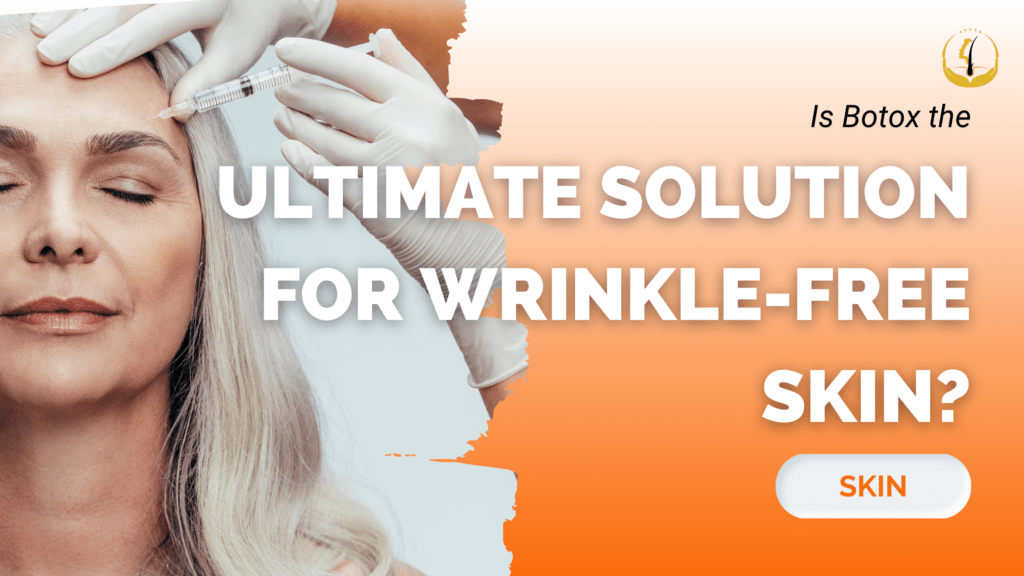
Botox treatment has the power to decrease the age of any person by simply reducing the appearance of wrinkles, fine lines, and other signs of aging. Botox is a safe treatment, but you must only visit a renowned cosmetic clinic like GLOJAS to get a Botox surgery. Wrinkles, fine lines and other similar signs of aging develop when we utilize similar facial muscles to make similar gestures again and again. To resolve this problem, cosmetic surgeons offer Botox injections, which can relax the facial muscles that are used excessively. The wrinkle will soften because the skin over it becomes relaxed. Botox is mostly utilized on the wrinkles between the eyebrows and forehead.The treatment is likewise helpful for brow wrinkles, crow’s feet, and different signs of aging on the upper region of the face. Since you use the muscles around your mouth to bite and speak, Botox medications aren’t used in those areas normally. It isn’t the best treatment for wrinkles that are caused by gravity or over the extreme exposure to the sun, since those don’t include the muscles. There are additionally numerous therapeutic uses for Botox, for example, treating Hyperhidrosis (excessive sweating), and headaches or migraines. This type of minimal invasive surgery is a brilliant, non-surgical approach to fight against the indications of aging in the face. It’s an incredible alternative for patients who prefer not to seek after more invasive anti-ageing treatments like facelifts. How Does It Works? The chemical used in Botox stops the nerve signals that are behind the contraction of the muscles, bringing about a weakening or brief paralysation of the muscle. When the muscle quits to contract and relaxes, the skin over it becomes soft as well. This will make wrinkles milder, and as the muscle becomes weaker, the wrinkles won’t end up noticeably deeper. Who Is An Ideal Candidate For This Surgery? An ideal candidate for botox treatment will be someone in good health, with no nerve or muscle issues that might get affected due to chemical infusions. The patient needs to be above 18 years of age, and not pregnant and breastfeeding. The patients should also have practical desires from the result of the Botox surgery and wish to remove the signs of aging from their faces. There are a couple of things that need to be considered before this treatment. If you have at least one of these issues, then this treatment won’t be ideal for you If you have drooping eyelids If you have severe allergies If you have a scar or tough skin around the area where infusion will be made If you have severe skin reactions to injections If you have muscle problems like pronounced weakness in the facial muscles you wish to treat If you have any skin issues around the expression lines you wish to treat You can visit the best cosmetic clinic, GLOJAS to know whether you’ve any such skin issues or not, and to know more about Botox as well. An expert surgeon will surely help you to get a better idea about this anti-aging treatment. Consult for FREE at GLOJAS Specialist Clinic.
Effective Remedies to Prevent Hair Thinning
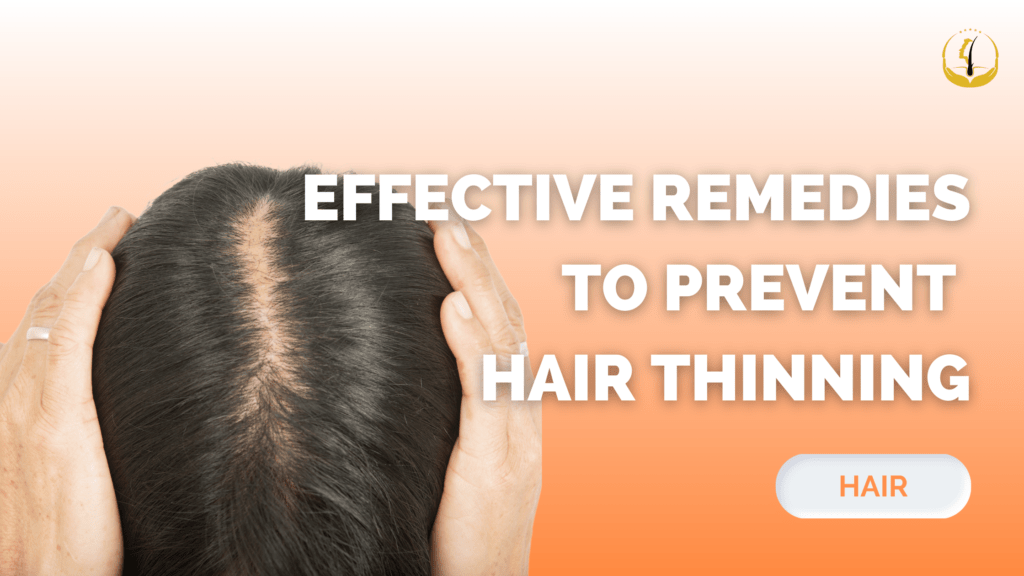
There are different factors that cause hair loss problem in men and women. These reasons might be heredity, a few medical conditions, improper hair care, and/or poor nutrition. While no one can control the genetic design, there are ways you can take to slow down your hair thinning problem and even help in hair regrowth, develop thicker strands, and enhance the general wellbeing of your hair. Are you facing a severe hair thinning problem and looking for ways to resolve the problem? If yes, then these tips can help you greatly. Try them today! Keep An Eye On What You’re Eating Your hair needs healthy food items to develop and to become stronger. Your diet must be filled with must-have fatty acids, protein, minerals, and vitamins. A few food items you need to ensure you’re routinely eating incorporate carrots, spinach, salmon, lean meats, sweet potatoes, lentils, nuts seeds, and yogurt. Poor diet, such as vitamin deficiency and insufficient protein consumption, can eventually lead to hair thinning. Crash dieting or the desire to get size zero can have the same impact as eating a junk food diet. It would help if you made sure that proper nutrition goes into your body by eating A wide range of fruits and veggies every day A lot of protein in Red meat and lean meat an excellent sources of protein, and those who don’t eat non-veg food can go for nuts, beans, cheese, and low-fat dairy products. Based on your height, weight, and nutritional goals, you must eat the right amount of calories every day. Leave The Hair Free Avoid pulling up your hair, so you can try loose hairstyles. Brushing your hair too much, constantly wearing it in a tight braid or bun, and wearing hair extensions too often can all result in hair thinning and breakage. Try Not To Overheat Every now and again styling with high heat can result in damage, harm and breakage. In case you’re worried about your hair thinning, utilize heat on rare occasions. Take Supplements Some vitamins can help to support hair development and fortify your strands. Everyday replenishing supplements help to empower hair development by supporting hair at the cell level. Stay Away From Gels, Sprays And Similar Items Heavy hair products can have severe adverse effects on the quality of your hair. These products might make your already existing hair thinning problem even worse. You should instead use light products that add volume. Yes, it’s true that you can get hair back on your head with a hair transplant, but it’s better to stop using these harmful products on your hair. Use A Gentle Shampoo Your hair will become thin and even break if too many chemicals are applied to it. So, always use a gentle quality shampoo that has a low amount of chemicals in it. Consult for FREE at GLOJAS Hair Specialist Clinic. We provide the best solution-oriented hair transplant with our specialist doctors and experts in their fields, treating all of our patients with honest, trustworthy, ethical, and equal service of the highest quality, meeting all the required national and international standards.
Essential Tips for Protecting Sun-Damaged Skin
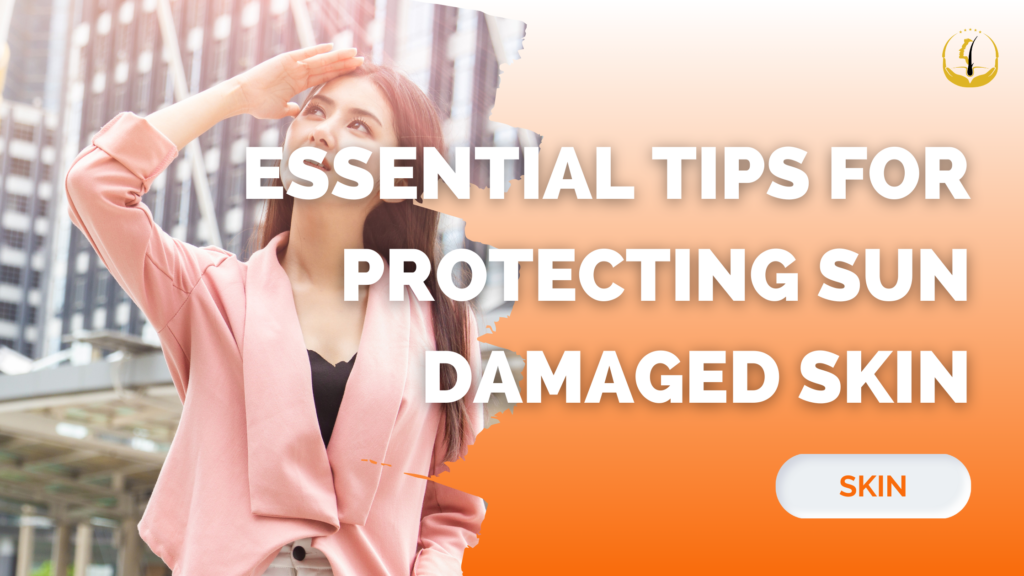
Sun damage can take a toll on your skin, causing concerns like sunspots that may make you hesitant to show off your skin. Fear not, as these tips and treatments are designed to help prevent and reverse sun damage, giving you the confidence to flaunt your skin without worry. Use A Sunscreen To Protect Skin From Sun Damage Commence a sun protection campaign today, as it’s never too late to shield your skin from cumulative sun damage. Utilize a high-quality sunscreen consistently. Even on cloudy days, harmful UV (Ultraviolet) rays persist, necessitating year-round protection. Sunscreen creams and lotions effectively reduce daily sun exposure, allowing your skin time to recover and your immune system the chance to repair existing damage. Use Antioxidants Add a potent antioxidant, such as Vitamin C, to your skincare routine and diet to prevent sun damage and brighten your skin tone. Antioxidants combat free radicals responsible for sun damage to healthy skin cells. Prior to outdoor activities, applying antioxidants boosts your SPF, offering enhanced protection. Additionally, antioxidants expedite cell repair, enhancing skin tone and appearance. Get A Skin Product To Fight The Existing Sun Damage If you’ve neglected the first two tips and sun damage has occurred, invest in a high-quality product from a reputable brand designed to eliminate dark spots caused by the sun. Look for ingredients like hydroquinone (HQ), which selectively targets hyperpigmented cells, inhibiting melanin generation and improving skin tone. Get Your Skin Exfoliated Exfoliating the skin helps eliminate excess pigmentation, allowing healthy cells to surface by removing dead and damaged cells. Employ exfoliating scrubs or recommended chemicals for regular skin maintenance. Microdermabrasion stands out as one of the best skin exfoliating treatments, offering various benefits such as exfoliation and rejuvenation. It effectively erases the adverse effects of sunburn from your skin. By incorporating these tips into your skincare routine, you can protect your skin from sun damage and address existing concerns. Whether it’s through sunscreen application, antioxidant use, targeted skincare products, or exfoliation methods like microdermabrasion, revitalizing your skin is within reach. Embrace these practices to restore your skin’s health and radiance, ensuring you can confidently showcase your skin without the fear of sun damage.
Can You Use Botox Under Eyes?
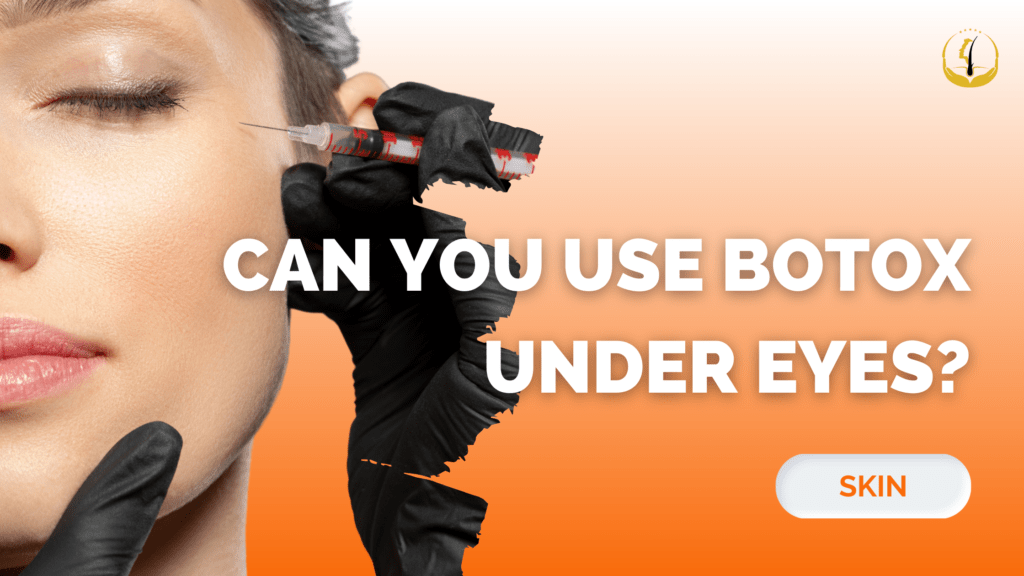
The desire for youthful and vibrant skin has propelled the popularity of cosmetic treatments, with Botox injections emerging as a sought-after solution. This blog delves into the use of Botox under eyes, addressing concerns such as wrinkles and fine lines, while providing insights into the safety and effectiveness of this treatment. Understanding Under-Eye Wrinkles As we age, under-eye wrinkles, commonly known as crow’s feet or fine lines, become a prevalent concern. Factors like sun exposure, genetics, and the natural aging process contribute to the formation of these lines. Typically appearing as small creases radiating from the outer corners of the eyes, under-eye wrinkles can make individuals appear older and more fatigued. How Botox Works Botox, derived from Botulinum Toxin, is a neurotoxin that temporarily paralyzes muscles. Widely used in cosmetic treatments, Botox diminishes the appearance of wrinkles and fine lines. When injected into specific facial muscles, it disrupts the signals from nerves to muscles, preventing them from contracting. Consequently, the skin overlying the treated muscles becomes smoother and less prone to wrinkles. Can You Use Botox Under Eyes? Yes, Botox can be used under eyes to address specific under-eye wrinkles. However, it’s crucial to grasp the limitations and considerations associated with this treatment: Crow’s Feet: Botox is most effective for dynamic wrinkles caused by muscle movements. Crow’s feet, visible when smiling or squinting, fall into this category. Injecting Botox into the muscles around the eyes can reduce the appearance of these wrinkles. Fine Lines: Botox can also soften fine lines under the eyes. However, it may be less effective for static wrinkles that persist even when muscles are at rest. Alternative treatments like dermal fillers may be recommended for static lines. Consultation: Prior to under-eye Botox treatment, consult with a qualified medical professional. They will assess your specific concerns and recommend an appropriate treatment plan tailored to your needs. Safety: When administered by a trained practitioner, Botox injections under the eyes are generally safe. However, potential risks such as bruising, swelling, or asymmetry exist. Choosing a reputable provider is crucial to minimize these risks. Results: Botox results are temporary, typically lasting 3 to 6 months. Periodic touch-up treatments may be necessary to maintain the effects. In conclusion, under-eye Botox treatment can be a viable option for addressing certain types of under-eye wrinkles, such as crow’s feet and fine lines. It achieves temporary relaxation of the muscles around the eyes, resulting in smoother skin. However, consulting with a skilled medical professional is essential to receive personalized recommendations. While Botox under eyes can yield impressive results, it may not be suitable for all types of under-eye wrinkles. Depending on your concerns, alternative treatments like dermal fillers or laser therapy may be suggested. Safety and natural-looking results should be prioritized, necessitating thorough research of your provider, asking pertinent questions, and discussing expectations during the consultation. By taking these steps, you can make an informed decision regarding under-eye Botox as part of your journey toward a more youthful appearance.
How Often Should Wash or Shampoo Hair?

Achieving beautiful and healthy hair requires a delicate balance in your hair care routine. One of the common dilemmas faced by many is determining the optimal frequency for washing or shampooing their hair. Let’s delve into the factors influencing hair washing frequency and explore tips to help you maintain your locks. Understanding Your Hair Type Oily Hair: Recommended Frequency: Every other day or every two days. Rationale: Oily hair tends to appear greasy, and more frequent washing is necessary to keep it fresh. Normal Hair: Recommended Frequency: Every two to three days. Balance: Overwashing can strip natural oils, making this balance crucial for maintaining healthy hair. Dry Hair: Recommended Frequency: Every three to four days or once a week. Strategy: Less frequent washing helps retain natural oils and prevents excessive dryness. Curly or Coarse Hair: Recommended Frequency: Once a week or even less often. Reasoning: Curly and coarse hair tends to be drier, and overwashing can lead to frizz and breakage. Chemically Treated Hair: Recommended Frequency: Every two to three days. Importance: Gentle washing helps maintain color and prevents damage for chemically treated hair. Factors to Consider Apart from hair type, various factors can influence your hair washing routine: Lifestyle: Consideration: Active lifestyles or heavy sweating may require more frequent washing to remove sweat and prevent odor. Climate: Impact: Humid environments may lead to oilier hair faster, while dry climates may result in longer-lasting dryness. Styling Products: Buildup: Products like gels, hairsprays, and serums can build up, necessitating regular washing to remove residue. Scalp Health: Balancing Act: Maintaining a healthy scalp is crucial; overwashing can lead to dryness, while infrequent washing may cause oil buildup and scalp issues. Tips for Healthy Hair Washing Now that you understand how often to wash your hair, here are additional tips for maintaining healthy hair: Use the Right Shampoo: Guidance: Choose a shampoo that aligns with your hair type and specific needs, such as dandruff or color-treated hair. Avoid Hot Water: Preventive Measure: Hot water can strip natural oils; opt for lukewarm or cool water for hair washing. Condition Appropriately: Application: Apply conditioner mainly to the ends to avoid making the roots oily. Limit Heat Styling: Caution: Excessive use of heat styling tools can damage hair; use them sparingly and use heat protectant products. Protect Your Hair: Precaution: When swimming, wear a swim cap to shield your hair from chlorine and saltwater’s drying effects. Finding the right hair washing frequency is a personal journey that hinges on hair type, lifestyle, and individual needs. Striking a balance between keeping your hair clean and healthy without overwashing or underwashing is crucial. Pay attention to your hair’s signals and adjust your routine as needed for beautiful, vibrant locks. Consulting with a hairstylist or dermatologist can offer personalized guidance for your unique hair care routine.
Is Regenera Activa Permanent?
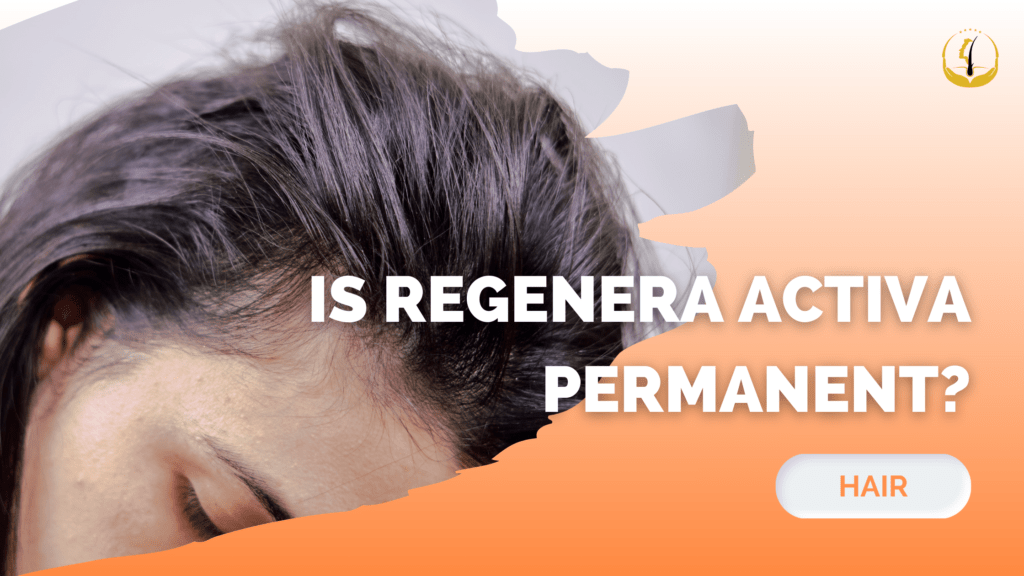
Hair loss can be a distressing experience for both men and women. Over the years, various treatments and products have emerged to combat this issue. One such innovation is Regenera Activa, a non-surgical hair restoration procedure that has gained popularity for its effectiveness. But the question on many minds is: Is Regenera Activa permanent? In this blog, we’ll delve into the science behind Regenera Activa and explore the longevity of its results. What is Regenera Activa? Regenera Activa is a cutting-edge non-surgical hair restoration technique that utilizes the power of autologous micrografts. Unlike traditional hair transplant procedures, Regenera Activa doesn’t involve surgery or the removal of hair follicles from one area of the body to another. Instead, it focuses on regenerating hair by using the patient’s own cells. The Procedure The Regenera Activa procedure begins with a small biopsy from the patient’s scalp, usually from the back of the head where hair loss is less likely to occur. This biopsy contains hair follicles and surrounding tissues. These tissues are then processed to obtain micrografts, which are rich in regenerative cells. These micrografts are injected into areas experiencing hair thinning or loss, stimulating the growth of new hair follicles. The Longevity of Results Now, let’s address the burning question: Is Regenera Activa permanent? While it’s true that Regenera Activa provides noticeable results, it’s important to understand that the permanence of these results can vary from person to person. Here are some key factors to consider: 1. Individual Variation: Hair loss is influenced by genetics, hormonal changes, and lifestyle factors. As a result, the response to Regenera Activa can differ among individuals. Some may experience longer-lasting results, while others may require periodic touch-up sessions. 2. Maintenance: Like any hair restoration treatment, maintenance plays a crucial role in preserving the results. Patients are often advised to follow a post-procedure care routine, including specific hair care products and lifestyle adjustments, to extend the longevity of their results. 3. Progressive Hair Loss: Regenera Activa can effectively address current hair loss concerns, but it may not prevent future hair loss. Hair loss can be an ongoing process, and additional treatments or adjustments may be needed over time. 4. Consultation and Monitoring: Regular consultations with a qualified healthcare professional are essential to assess the progress and determine if any follow-up treatments are necessary. Adjustments to the treatment plan can be made based on individual needs. In conclusion, the permanence of Regenera Activa results is subject to various factors, including individual genetics, maintenance, and the progression of hair loss. While some individuals may enjoy long-lasting results, others may require periodic touch-up sessions to maintain their desired level of hair density. Regenera Activa is a promising non-surgical hair restoration option for those seeking to address hair loss without the need for invasive surgery. However, it’s crucial to approach the treatment with realistic expectations and to consult with GLOJAS professionals who can provide personalized guidance based on your unique circumstances. Ultimately, the decision to undergo Regenera Activa or any other hair restoration treatment should be made after a thorough consultation and consideration of all available options. Remember that individual experiences may vary, and the permanence of the results depends on several factors. At Glojas, we welcome clients to reach out to us directly to schedule a free initial consultation. We offer guidance and valuable insights on how best to address your specific challenges. Let us assist you in navigating your journey with confidence and clarity.
Breaking the Silence: The Surprising Causes of Hair Loss
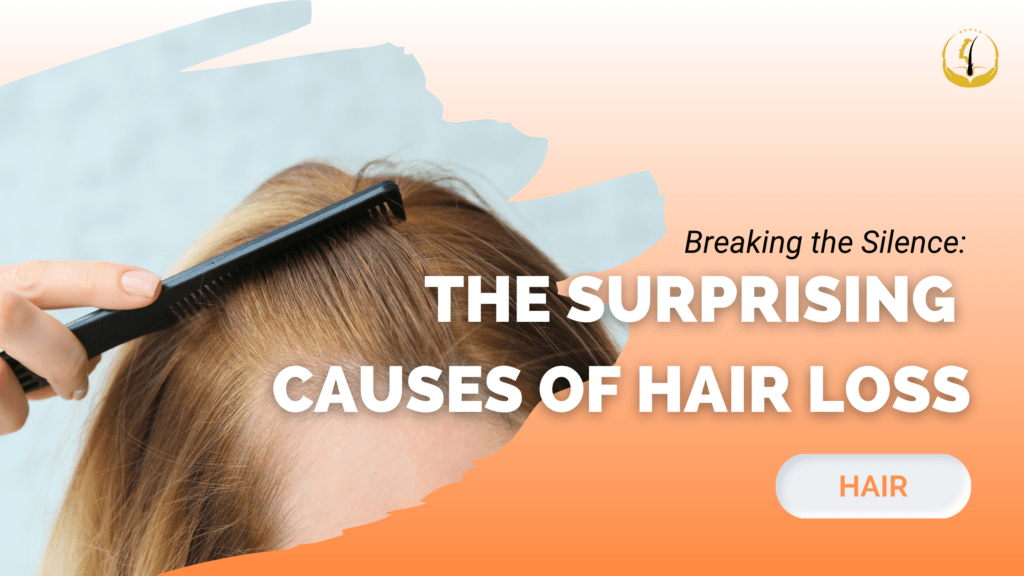
Hair loss is a major problem among men and women. Here are shocking causes of hair loss. Fortunately, balding can be treated with hair transplant surgery at GLOJAS Hair Specialist Clinic. Numerous hair loss conditions originate from hereditary problems, especially in instances of male pattern baldness, or androgenic alopecia. However, lifestyle and environment can result in diminishing and shedding on the scalp and even on the body. Large portions of these male pattern baldness cases are totally preventable, however finding out the cause which may be influencing male pattern baldness is vital to overcome and turn around the problem. Let’s take a look at these unexpected and shocking causes of hair loss. Stress Depression Mental issues don’t harm your interior health only. Stress depression can prompt physical issues, such as weight gain, weight reduction and baldness. Excess amount of stress hormones in the body intensifies adrenal fatigue, which happens due to the overproduction of cortisol. High amounts of cortisol are discharged by the adrenal glands and low production of other vital hormones like androgens and aldosterone, bringing about balding or thinning up top hair. Bad Eating Habits Vitamins and minerals are keys to guarantee that the human body works effectively, incorporating growth of hair. Lack of sufficient nutrients and supplements, circulation and oxygen levels in the scalp are reduced. A low-calorie or unhealthy eating habit may trigger short-term or long term balding, so monitoring what you decide to eat is critical.Make sure you’re receiving enough protein, the essential nutrient for healthy hair, through fish, white and red meat. Disease/Illness Ailment puts strain on the body and hinders its functions, and male pattern baldness or damage can be an early indication of other health issues. Thyroid dysfunction, specifically, is one problem that makes follicles close down and brings shedding or thinning on the scalp. Lupus, an immune system disorder, gives weak or broken hairs over the forehead. Lymphoma, a sort of cancer, can bring male pattern baldness. Hair loss is common in HIV patients, sarcoidosis, myotonic dystrophy and other chronic ailments. In some cases, baldness can be the first piece of information to another more serious illness, so watching out for your scalp health improves your chances of early ailment identification. If you want a reasonable cost for a hair transplant, GLOJAS Hair Clinic can fulfill your objectives. Consult with us for FREE! GLOJAS clinic has developed a team of experts who have full mastery of hair transplants and other cosmetic procedures.
Laser Hair Removal Your Top FAQs, Clarified
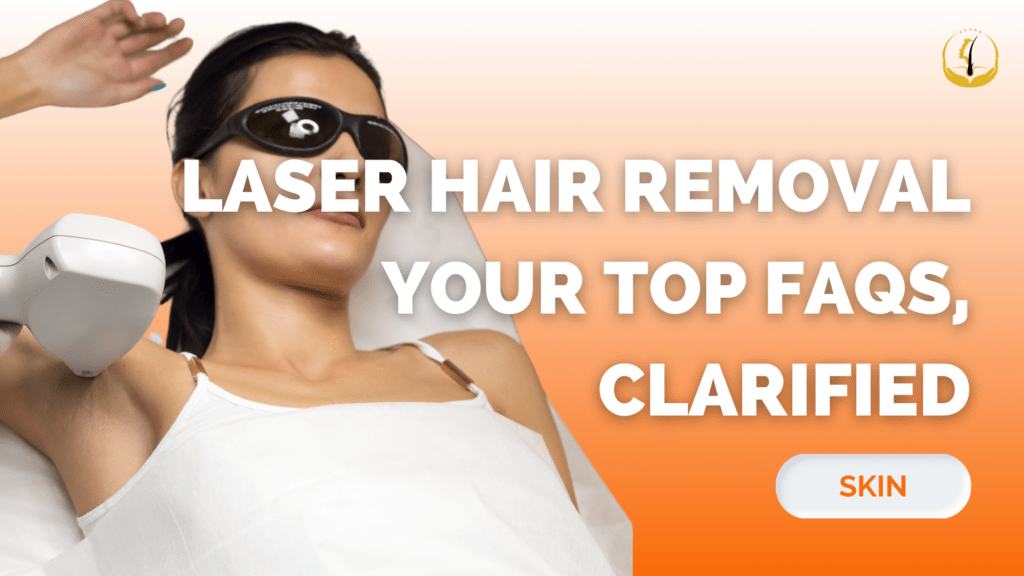
Laser hair removal, a revolutionary cosmetic procedure offered at GLOJAS, stands out as a reliable, effective, and safe solution for eliminating unwanted body hair. As its popularity continues to soar, here’s an in-depth exploration of frequently asked questions (FAQs) to shed light on the myriad benefits of laser hair removal. What Does Laser Hair Removal Feels Like? The sensation experienced during laser hair removal varies among individuals, with many likening it to the feeling of an elastic band gently striking the skin’s surface. Notably, the discomfort is significantly less compared to alternative methods such as waxing. For those sensitive to pain, surgeons can employ numbing creams or medications to enhance comfort during the procedure. How Can I Be Sure The Hair Won’t Regrow? Laser hair removal yields permanent results. After a few sessions of this transformative procedure, unwanted hair is eliminated for good. For a more detailed understanding of the treatment outcomes, consulting with a medical professional is recommended to address individual concerns and expectations. Laser Hair Removal for Dark Skin – Is It Safe and Effective? Absolutely. While various clinics offer laser hair removal, only a select few, including GLOJAS, specialize in catering to both lighter and darker skin tones. Advanced technology, featuring an extended wavelength, ensures the safe penetration of the skin, targeting melanin in the hair shaft to eradicate undesired hair follicles. Regardless of skin tone, impressive results are achievable. Are There Any Risks Associated with Laser Hair Removal? Laser hair removal is conducted on an outpatient basis, eliminating the need for prolonged stays at the cosmetic clinic. With no required recovery time, patients can promptly resume their daily routines or return to work. The low risks associated with this treatment stem from the laser’s focused impact on hair follicles without affecting the surrounding skin. To delve into specific details and potential risks, consulting with a GLOJAS surgeon is advisable. Conclusion Laser hair removal emerges as a transformative and permanent solution for ridding the body of unwanted hair. While the treatment is remarkably safe with minimal risks, the key lies in choosing a certified and renowned cosmetic clinic such as GLOJAS to ensure optimal results. Take the first step toward a hair-free future by scheduling a FREE consultation at GLOJAS Clinic, where expert guidance and exceptional outcomes await.
The Ultimate Solution? Microdermabrasion for Acne Scar Removal
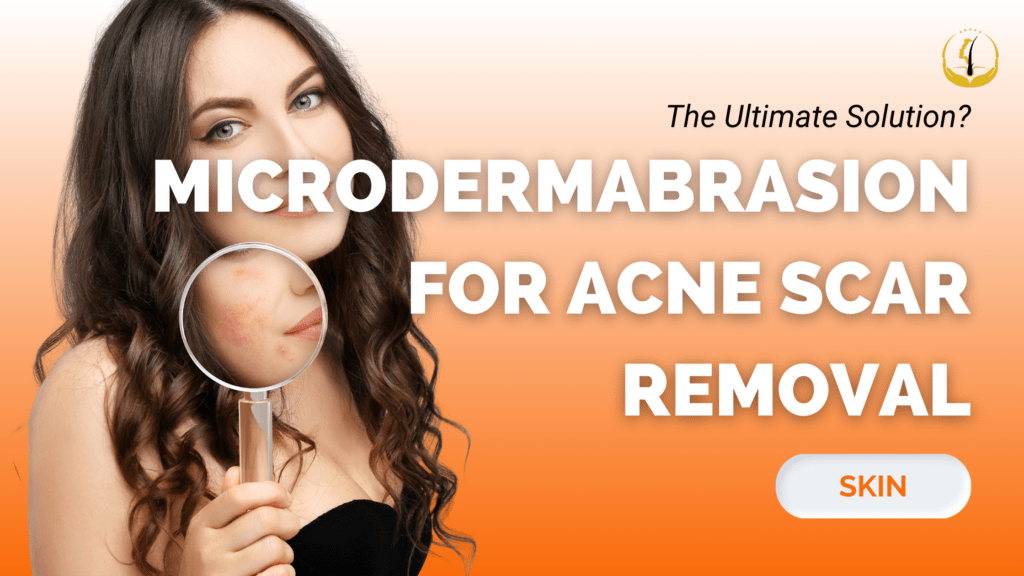
Scars that are left behind by acne not only look ugly, but they also damage the confidence of a person. Microdermabrasion at GLOJAS is an amazing cosmetic surgery procedure that’s safely removes acne scars and gives you a glowing and smooth skin surface Millions of women across the world suffer from acne. Are you also one of those who suffer from acne? You know what’s even worse than acne? The scars that get left on the skin once the acne starts to disappear. You’ll be surprised to know that more than 60% of people are affected by acne problems at some point in their life. After the acne disappears, there’s a high possibility that they’ll have acne scars. Keep in mind that acne isn’t something that only affects or attacks just in your teenage years, instead the scars left on your face can remain for a lifetime. Nobody is flawless, we have some flaws, but clear acne scars on our faces surely ruin our beauty to a great extent. This is the reason why we must make an effort to hide these scars permanently. By following the process of shedding, the external surface layer of the skin replaces itself after every 28 days, which is known as peeling or natural exfoliation. This is where cosmetic treatments can help, for example Microdermabrasion treatment accelerates the rate at which the skin would restore itself, uncovering new, fresh shining skin. Microdermabrasion is available in GLOJAS clinic and it is performed by qualified surgeons only. The machines used in cosmetic microdermabrasion offer desired results. Whether it is gentle peeling or major skin treatments, these machines transform the surface, and you get a smooth and glowing skin like you had never before. Worried about your safety? Just relax, microdermabrasion is a safe, controlled cosmetic treatment that intensely exfoliates and resurfaces your skin. It will clean the external layers of the skin, uncovering a fresh surface, while lessening the visibility of acne scars and other skin flaws. It makes the skin smooth, by eliminating small scars, uneven skin tone, sun damage, birthmarks, aging signs and other spots. Microdermabrasion is one of the best treatments available that uses a light spray of precious stones, which will tenderly and easily remove dead dull cells from the upper layer of the skin. Then, the vacuum suction evacuates the gems and dead/dull cells that results in cleaned, smooth and sparkling skin. The benefits of microdermabrasion are unlimited and the treatment is appropriate for all skin types. It helps in the development of new skin and collagen, which thickens the dermis and enhances resistances to the effects of aging. There’s hardly any time required for recovery after this treatment, and you can go back to your normal lifestyle or work after 1 or 2 hours. We can say that microdermabrasion is surely the best acne scar treatment. Microdermabrasion is a safe procedure that’s performed to treat different types of skin conditions to keep the skin in good condition. However, it should only be performed by a qualified and expert surgeon like at GLOJAS. Consult for FREE at GLOJAS Clinic.
